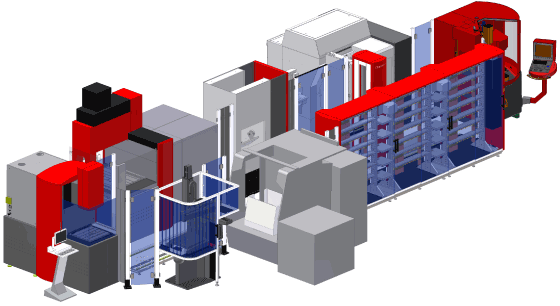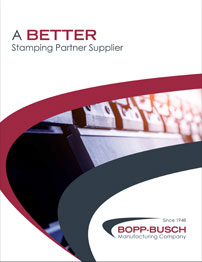
Flexible manufacturing is an integrated system of computer-controlled machines, transportation, and handling systems under the control of a larger computer. Flexibility is attained by having an overall system of control that directs the functions of both the computer-controlled equipment and handling systems. These computer systems are designed to be programmed or grouped easily with other devices to allow fast and economical changes in the manufacturing process.
This ability aids in enabling quick responses to market changes and enabling mass customization of products. The following information discusses what makes a system flexible and the make-up an entire flexible manufacturing system.
Flexibility is the speed at which a system can react to and accommodate change. With this system, a certain degree of flexibility allows the system to respond to predicted or unpredicted changes. To be considered flexible manufacturing, the flexibility must exist during the entire life cycle of a product, from design to production to distribution.
A typical flexible manufacturing computer system consists of a central computer and microcomputers controlling the individual machines and other components. Generally, it includes a distributed computer system that is interfaced to the workstations, material handling system, and other hardware components. These areas consist of:
The processing stations
These stations are essentially automated CNC (Computer Numerical Controls) machines. CNCs rely on digital instructions from computer-aided manufacturing (CAM) or computer-aided design (CAD). The CNC machine then interprets the design from the CAM/CAD instructions.
The automated material handling and storage system
These systems connect the work machines to optimize the flow of parts through the process.
Central control computer
This computer station controls the movement of materials and machine flow.
Flexible manufacturing as a system stands out because it does not follow a fixed set of process steps. The process sequence changes according to requirements to allow maximum efficiency. The sequence of material flow from one tool to another is not fixed nor is the sequence of operations at each tool fixed. Though the features of this manufacturing innovation process are similar, the manner in which they are adopted and implemented depends on product type, manufacturing, maintenance, process planning, and quality control processes. It is also contingent upon the people carrying out these processes, the productive resources being used, and the organizational arrangements used to divide and coordinate the processes.
Since 1948, Bopp Busch has continually upgraded our manufacturing processes to become an efficient and cost-effective stamping supplier to our customers. To learn more about Bopp Busch and our full capabilities, contact us today.


